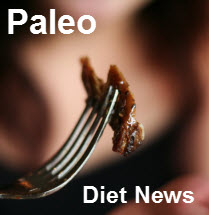Grass-fed Beef vs. Poultry on the Paleo Diet
It seems that the tide is slowly turning in favor of red meat. More and more research is being done that shows the benefits of the consumption of beef, especially grass-fed beef. And more specifically, grass-fed beef is shown to have a better nutritional profile than poultry like chicken and turkey. This is an interesting twist because for at least 60 years beef has been portrayed as the saturated fat, artery clogging villain in our diets and poultry touted as the best source of animal protein because of low fat content. Studies done on health and inflammation are showing that grass-fed beef is far more nutrient dense than poultry. I know that for many grass-fed beef versus poultry is favored on the Paleo diet.
The Natural News website posted this on Tuesday:
Saturated fat and cholesterol have been blamed for heart disease and other cardiovascular diseases. Research indicates that saturated fats and cholesterol are necessary for overall cellular health. They play an extremely important role in regulating neurological, cognitive and hormone function. A diet low in these important fats causes lowered immunity, sex hormone function and accelerated aging and brain degeneration.
Red meat could be one of the best foods in an individual’s diet or one of the worst. The key factor is what the animal is eating. Naturally, cows eat a near 100% green diet of grass, flowers, shrubs and other wild vegetation. Grain feeding is genetically incongruent for these animals and leads to excessive weight gain and fat accumulation.
That grain is totally unsuitable for cattle has been known by many Paleo dieters for some time. It is truly a case of “you are what your food eats”. Grass-fed beef versus poultry has been preferred on the Paleo diet for many people.
The most important difference between beef and poultry is the ratio of omega-6 to omega-3 fatty acids. The over consumption of omega-6 fatty acids in our Standard American Diet (SAD) has caused inflammation in our population, which has led to many diseases, including heart disease. Poultry is only one source of omega-6. Other sources include: processed vegetable oils like, soy, corn, canola, whole grain breads and nuts.
The typical grain-feed is made up of corn and soy due to the low cost associated with government subsidies. Grain-fed cows are extremely high in omega 6 fatty acids. The average ratio for a cow on a grain-fed diet is roughly 25:1 (omega 6:3).
Humans should naturally have an omega 6:3 ratio around 4:1 or 2:1. When these ratios become skewed, they trigger cellular inflammation and accelerated cellular degeneration. This environment causes an individual to become highly inflamed and to build degenerative disease.
The more grass an animal eats the greater their omega 3 content and the lower their omega 6 levels. A 100% green-fed diet, which is genetically congruent for a cow would provide an omega 6:3 ratio of 2:1. This is ideal for the animal’s long-term health and is highly anti-inflammatory for human consumption. The omega 3 fatty acids present in this meat are primarily the all-important long-chain variety EPA and DHA.
Chicken and turkeys cannot live on grass alone. They lack the highly specialized digestive tract that allows them to convert grass and roughage into a quality meal. They need some addition to grass and the vast majority of farmers choose to feed them a mixture of soy and corn. Chickens can get about 25% of their calories from grass while ducks can go up to about 50%. The higher the level of grass, the higher the anti-oxidant and omega 3 content of the meat and eggs.
Grass-fed mammals contain high levels of conjugated linoleic acid (CLA). CLA is considered to be one of the most potent anti-carcinogenic nutrients. Finnish researchers have found that the greater the amount of CLA in a woman’s diet, the lower her risk of breast cancer. Women who consumed the largest amount of CLA had a 60% lower risk for breast cancer.
Besides grass-fed beef, there is also pastured lamb and goat which have similar highly beneficial profiles. It might even be that for some people who find it harder to eat beef that lamb and goat is a better source of animal protein.
There are obviously huge benefits to introducing grass-fed beef into your diet. I found that once I stopped eating carbohydrates with meat, I digested and metabolized the beef much better. If I had eaten a “steak and potatoes” type meal, I would feel sluggish and tired after. When I eat a grass-fed “steak and asparagus” type meal, I feel great and full of energy. As a bonus I stay satisfied for a very long period of time.
Many have found that eating grass-fed beef versus poultry is better on the Paleo diet than any other type of meat. Give it a shot for yourself. You can easily buy some high quality grass-fed steak at US Wellness Meats. If you do your research you may even find a local source in your area. In the Chicago area (southern Wisconsin, northern Illinois and Iowa) there is the Wallace Farms buying club. They deliver to several locations in the Chicago area and have a warehouse in Naperville, IL.
Have you tried grass-fed beef yet? Did you notice a difference in how you feel? Has your blood profile changed? Please leave your comments questions and observations below in the comments section. Thanks for visiting!







Red meat is good for you if it is lean. It’s really quite simple, grass fed beef is far more healthier in terms of Omega-3 content and lower fat content than poultry. I buy Grass Fed Beef on line from La Cense Beef. You should check out their Fall Catalog.